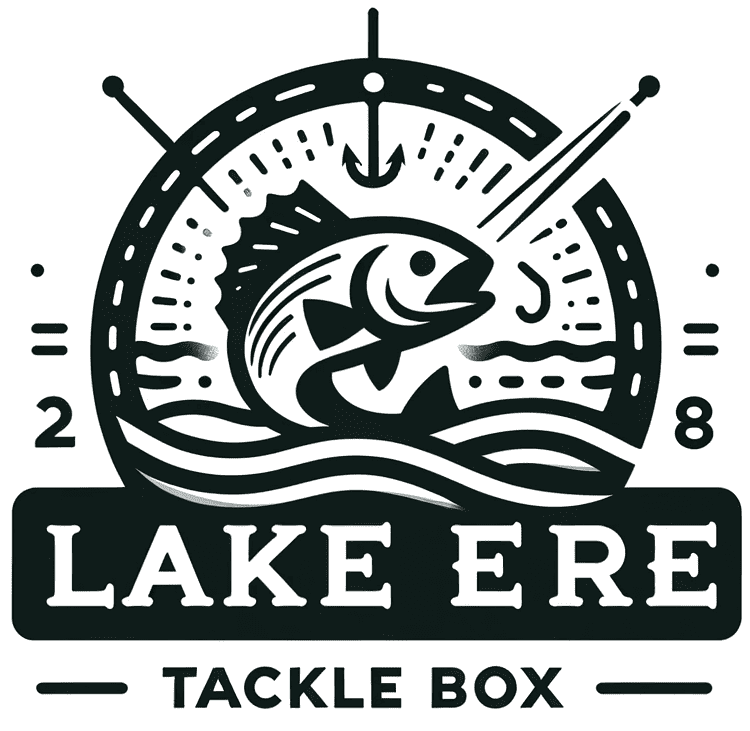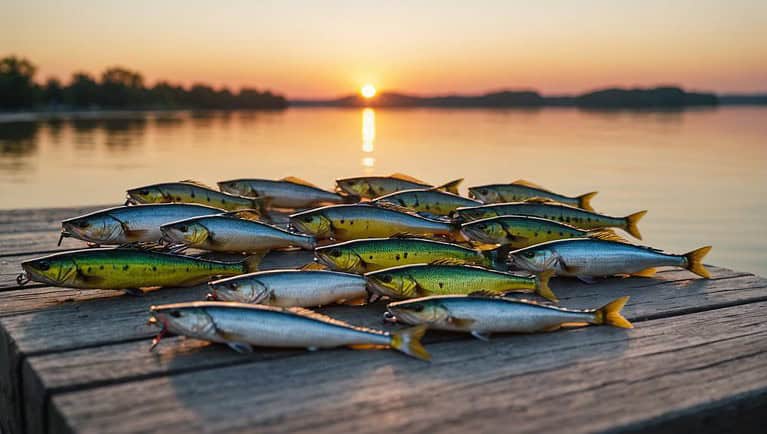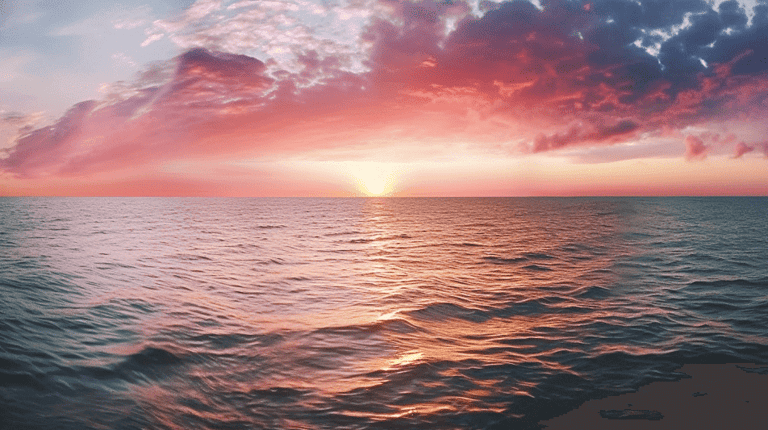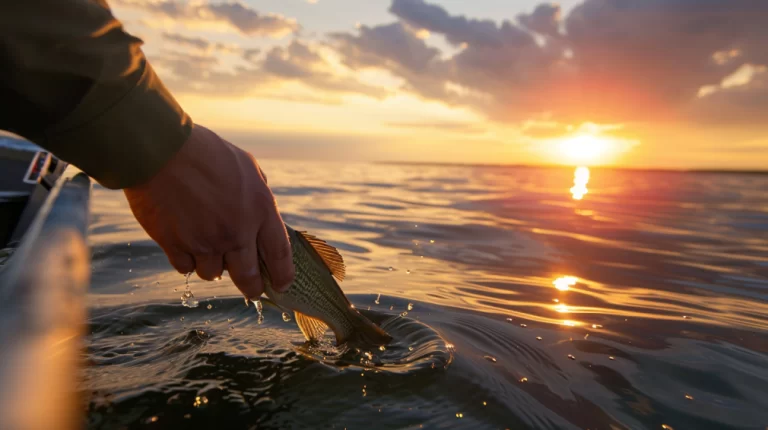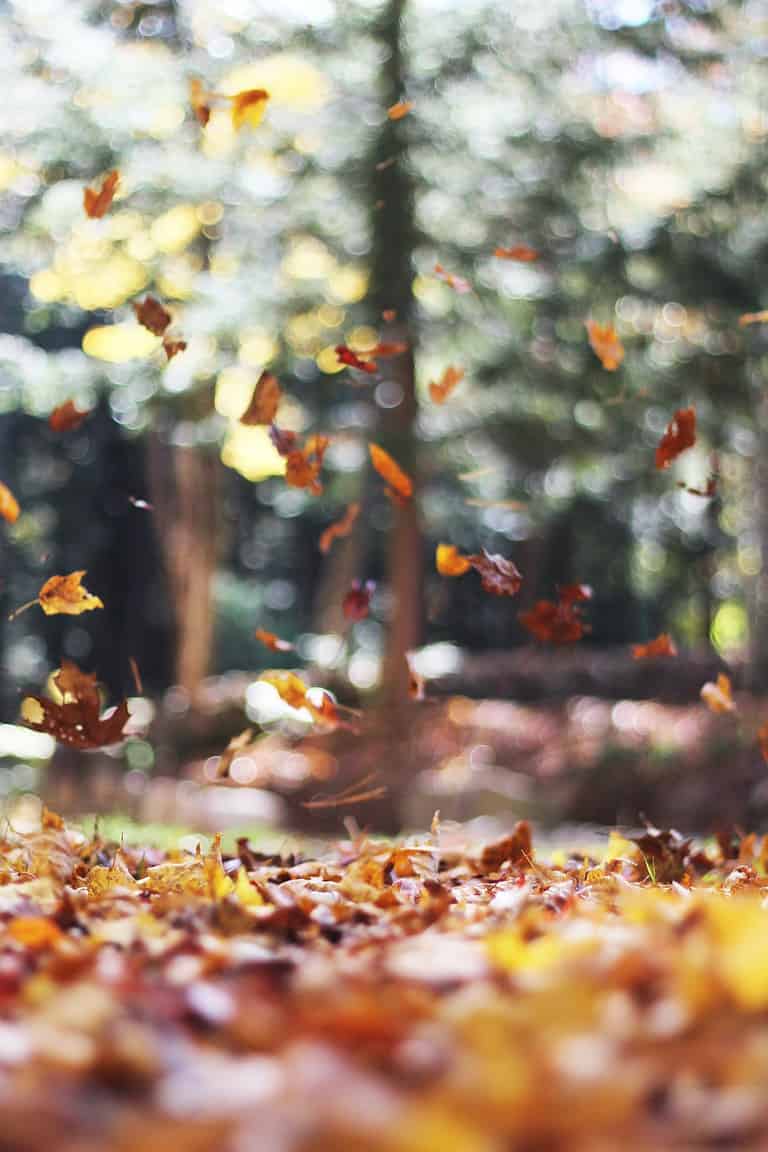Lake Erie Fishing Guide 2024: Safe Navigation in Unpredictable Weather

Isn’t it a coincidence that the best days for fishing on Lake Erie are when the weather seems most unpredictable? You’ve likely noticed how quickly a calm morning can turn into an afternoon of challenging waves and gusts, particularly with winds coming from the north, northeast, or east. These conditions aren’t just uncomfortable; they can be downright dangerous if you’re not prepared.
Understanding the nuances of Lake Erie’s weather is crucial, especially since a wind speed over 10 mph can drastically change your day’s plan. Equipped with the right safety gear, knowledge of the lake’s behavior, and an eye on the most reliable weather forecast tools, you can ensure your fishing trip is both enjoyable and safe.
But there’s more to it than just watching the weather; knowing how to read the lake’s signs and having a clear plan for emergencies are skills every boater should have before venturing out. Let’s explore how you can master these aspects, ensuring your next fishing adventure on Lake Erie is memorable for all the right reasons.
Table of Contents
Key Takeaways
- North, northeast, and east winds pose the highest risks for boating safety on Lake Erie.
- Beginners should avoid strong winds from these directions.
- Cold water adds an additional layer of risk.
- Familiarize yourself with Ohio boating safety requirements and regulations.
Understanding Lake Erie’s Climate
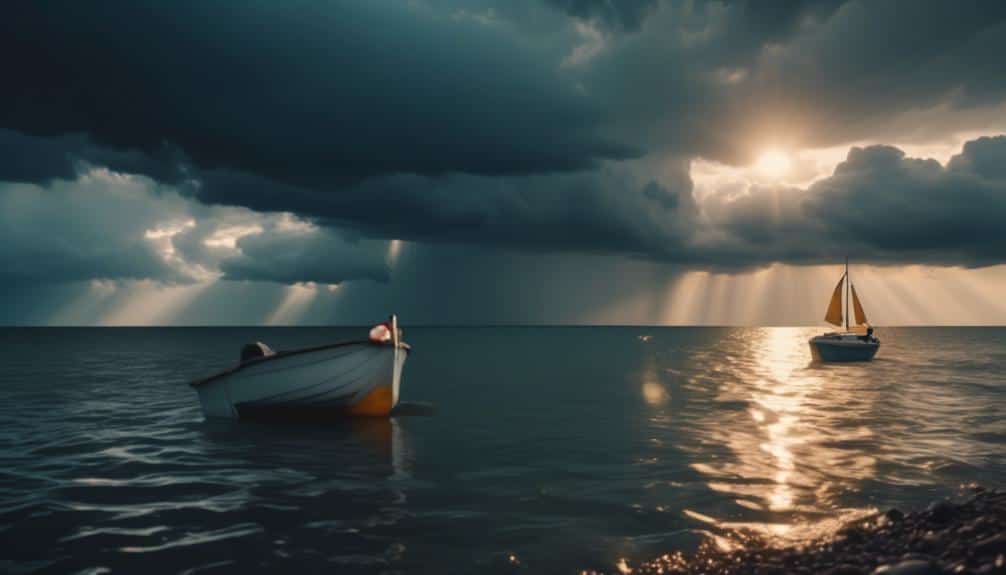
To effectively navigate Lake Erie’s variable conditions, it’s crucial to understand that north, northeast, and east winds significantly impact boating safety. These winds are known to pose the highest risks, especially for beginners who mightn’t be familiar with the challenges of maneuvering in such conditions. The cold water of Lake Erie adds another layer of risk, making it imperative to exercise caution and prioritize safety above all else.
It’s strongly recommended to avoid boating during strong winds emanating from these directions. Such conditions can rapidly change the lake’s demeanor, transforming it from a calm surface to a challenging expanse of water that can test even the most experienced boaters.
Before you decide to head out, it’s essential to familiarize yourself with the Ohio boating safety requirements and regulations. This knowledge, coupled with a vigilant eye on the weather forecast, can significantly mitigate the risks associated with boating on Lake Erie.
For beginners, an excellent way to learn about Lake Erie’s conditions and safety measures is by going on a charter or fishing trip with experienced captains. These experts can offer invaluable insights into navigating the lake’s cold waters safely, ensuring a rewarding and secure boating experience.
Essential Safety Gear
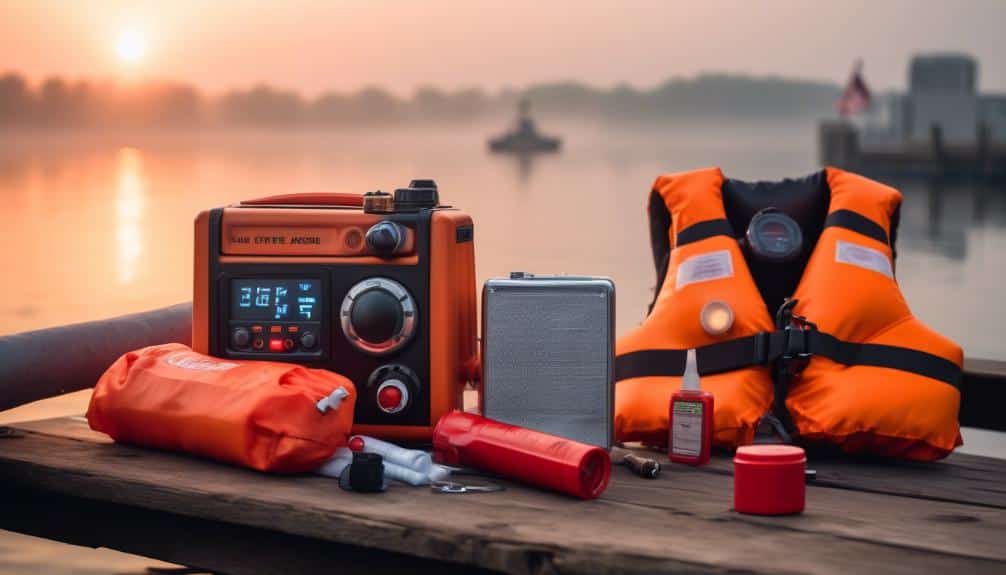
Understanding Lake Erie’s climate and the potential hazards posed by its cold waters and variable winds, it’s critical you equip yourself with essential safety gear for a secure boating experience. The unpredictable weather conditions and the vastness of the lake necessitate a well-thought-out safety kit to ensure you’re prepared for any situation.
To navigate these challenges effectively, consider the following essential safety gear:
- Navigation and Communication:
- A VHF radio with access to weather channels for real-time updates and emergencies.
- A fishfinder with GPS capabilities not only aids in locating fish but also ensures you can navigate back to shore or call for help accurately.
- A simple, reliable compass for maintaining direction when electronic devices fail.
- Personal Safety:
- Life vests for everyone onboard, tailored to individual sizes to ensure proper fit and buoyancy.
- Flares to signal for help in case of an emergency, especially during low visibility or at night.
- Anchoring and Stability:
- An anchor with sufficient rope to maintain your position, crucial for fishing and during sudden weather changes.
Additionally, keeping a well-maintained live well is essential not just for keeping your catch fresh but also for ensuring the balance and stability of your boat in changing conditions.
Weather Forecast Tools
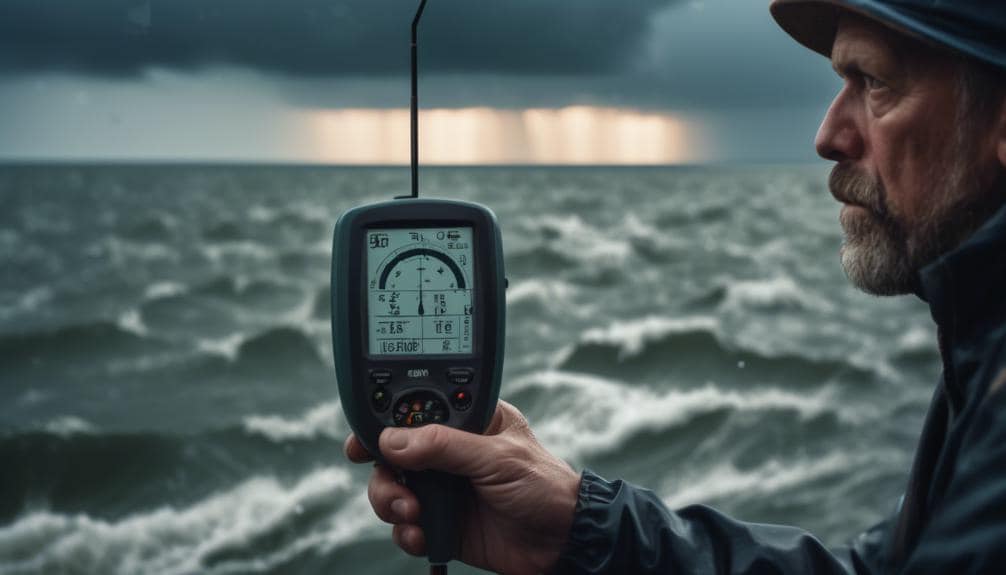
Lake Erie’s unpredictable weather makes having advanced forecast tools a necessity for any fisherman’s safety and success. Especially in the western basin, where conditions can change rapidly, being equipped with the right gear is paramount. Marine VHF radios with weather channels are indispensable for staying ahead of sudden shifts. These tools provide real-time updates, ensuring you’re never caught off guard by an approaching storm.
In addition to radios, integrating fishfinders with GPS capabilities into your toolkit allows for more than just locating fish. They’re crucial for navigating through the unpredictable weather and wind conditions Lake Erie is known for. This technology ensures you maintain your course, even when visibility drops.
Don’t overlook the simplicity and reliability of a compass. It’s a fundamental piece for maintaining direction amidst changing weather patterns, a common challenge in the western basin. Moreover, carrying portable weather monitoring devices and keeping abreast of NOAA weather updates are smart practices. They offer the detailed information needed for making informed decisions on the water.
Lastly, subscribing to tow insurance services offers a safety net against emergencies caused by sudden, unpredictable weather changes. These precautions, together, form a comprehensive approach to tackling Lake Erie’s volatile conditions, ensuring your fishing trips are both productive and safe.
Recognizing Dangerous Signs
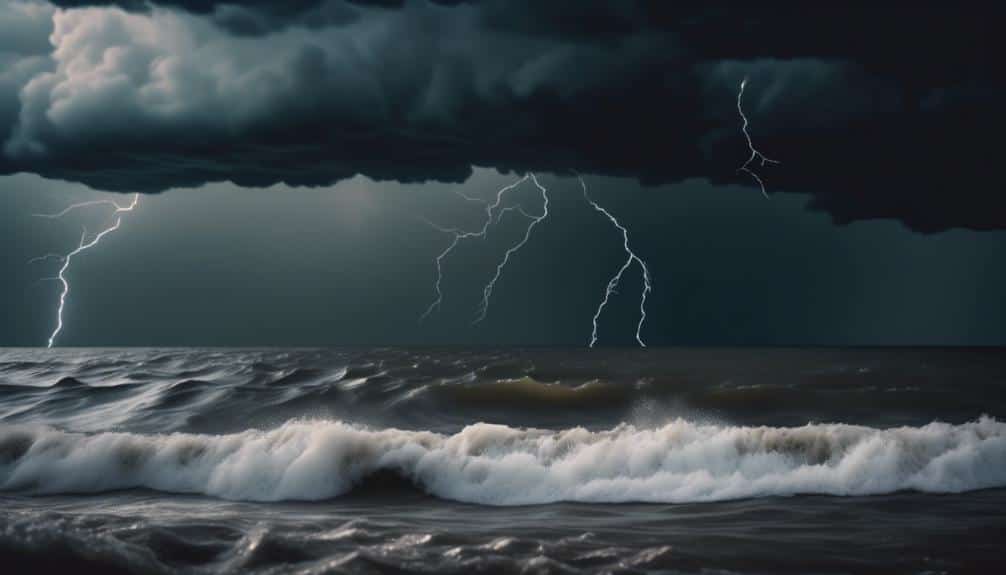
Why should you keep an eye on the direction of the wind when planning your fishing trip on Lake Erie? Recognizing dangerous signs is essential for a safe outing, and one thing you must understand is how wind direction impacts boating conditions.
- North, northeast, and east winds are particularly treacherous because:
- They can cause waves to rapidly increase in height and become tightly spaced with white caps, making navigation difficult.
- In Lake Erie’s western basin, these winds are notorious for creating sudden, dangerous changes in wave direction and height.
- Waves can escalate from 1 foot to 3-4 feet in a short period, significantly increasing the risk of capsizing or taking on water.
South winds also pose a risk as they can cause waves to:
- Build and become larger the further offshore you venture, creating hazardous conditions for boaters.
- This effect is exacerbated in open water where there’s less protection from the land.
Always check weather forecasts and understand wind patterns before setting out. Knowing how to read these signs can mean the difference between a successful fishing trip and a dangerous situation on Lake Erie.
Emergency Procedures
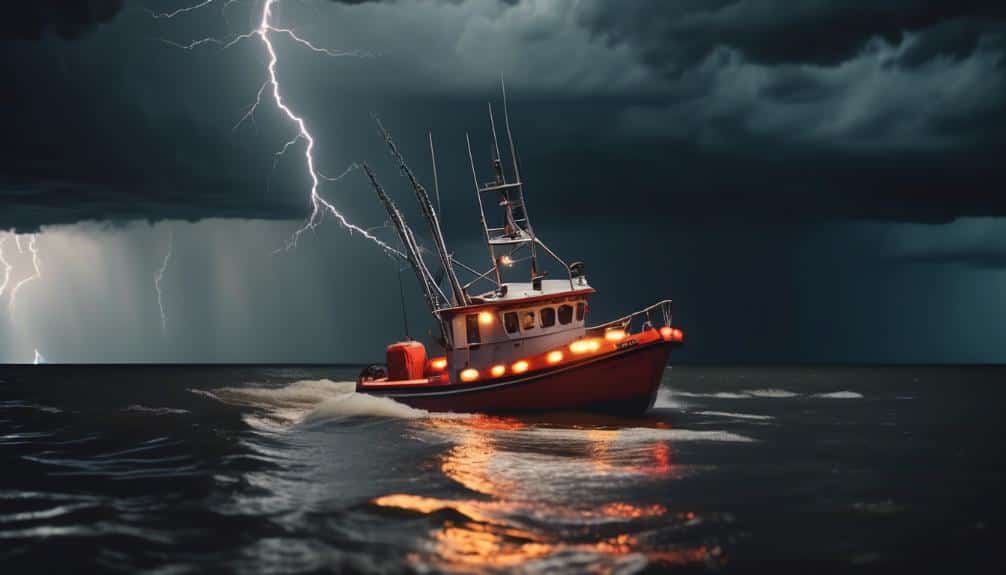
Recognizing dangerous signs, such as treacherous wind directions, is crucial for a safe fishing trip on Lake Erie; equally important is knowing what to do in case of an emergency. In the event you’re caught in an unexpected situation, make sure you’re prepared to act swiftly and efficiently.
Firstly, should you face rough conditions or find yourself in distress, it’s essential to communicate your situation immediately. Use a marine VHF radio to signal for help on channel 16. This quick action could be the difference between a close call and a dire outcome.
Moreover, consider activating a SARSAT PLB (Personal Locator Beacon) if the situation warrants it. This device sends an alert and your location to rescue services, ensuring help is on its way.
Always have a first aid kit and necessary tools, like pliers with wire cutters, readily available on board. These tools would take on crucial roles in managing minor injuries or freeing entangled fishing lines.
In scenarios where your boat needs towing, ensure the tow rope is robust and maintain a safe distance from other vessels to prevent collisions. Stay informed about tow boat services’ availability, particularly during colder months or under rough conditions, and don’t hesitate to use them when necessary.
Frequently Asked Questions
What Month Is Best for Walleye Fishing Lake Erie?
April’s your best bet for walleye fishing on Lake Erie, as temperature impacts and moon phases favor their activity. May and June follow closely, with September and October offering solid opportunities due to cooling waters.
Where Are the Walleye Biting in Lake Erie?
Imagine the sun glinting off your lure as you cast near Kelleys Island and the Bass Islands, where walleye are biting. Your choice of boat and lure selection are crucial for success in these spots.
What Do You Need to Fish on Lake Erie?
You’ll need to meet license requirements and adhere to boat safety protocols to fish on Lake Erie. This includes carrying essential gear, understanding Ohio’s regulations, and ensuring your boat’s equipped for emergencies.
How Safe Is Lake Erie Fish?
Eons ago, Lake Erie’s fish were deemed unsafe due to contamination concerns. Now, with strict species regulations, they’re generally safe to eat. However, always check local advisories and limit consumption based on guidelines.
Conclusion
In conclusion, when tackling Lake Erie’s unpredictable waters for fishing, always remember, ‘better safe than sorry.’ Ensure you’re armed with essential safety gear and stay vigilant by utilizing weather forecast tools.
Recognizing dangerous signs and knowing emergency procedures can be lifesaving. It’s crucial to respect Lake Erie’s power by preparing for rapid weather changes.
By being well-informed and cautious, you’ll not only protect yourself but also enjoy a fruitful fishing experience, all while navigating Lake Erie’s challenging yet rewarding waters.
